Can Botox Make Flawless Skin?
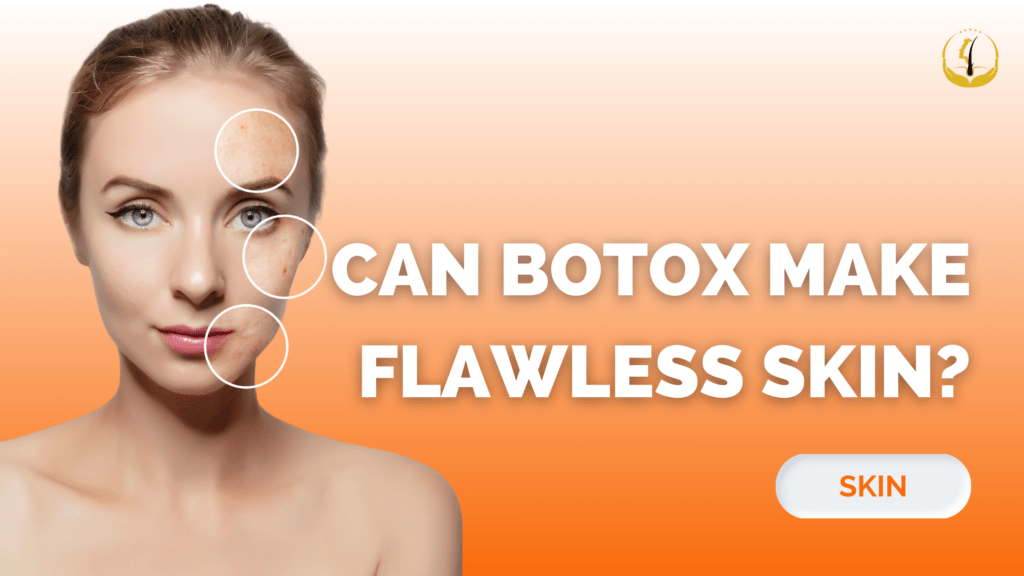
Yes, It’s True! Botox Treatment Makes Your Skin Flawless! Botox Treatment can make you look young! But, how can you find out if Botox is right for you or not? Botox surgery can improve your beauty remarkably by simply removing the wrinkles, fine lines, crow’s feet and all the other similar signs of aging. It is already a known fact that Botox is ideal for almost all types of skin. However, a lot depends on the level of wrinkles, fine lines, crows feet and other signs of aging that determine whether this treatment will be effective or not. Botox treatment is performed by using injections, but unlike other treatments, which plump up a facial area, Botox makes the facial muscles relaxed. It’s also quite important for every person that before reaching a final decision and undergoing this treatment, it is crucial for you to consult with the best surgeon like at GLOJAS so that they can get complete information about the effectiveness of Botox and what type of wrinkles it has to work on. Keep in mind that Botox is not any type of abrasive resurfacing procedure. In fact, it is a skin smoothing technique performed on the face through muscle relaxation. Most people with facial skin thinning are likely to get affected by smile lines, and these wrinkles can be easily smoothed out when Botox treatment is performed. Ideal Candidates For Botox Treatment Many people with poor collagen production and facial skin thinning problem, often notice that fine lines have started developing on different areas of their faces, like near the eyes, or along the corners of the mouth. Excess fatty tissues are the main reason behind the occurrence of large forehead folds, and brittle skin is most often the cause for small and horizontal frown lines around the eyebrows. People affected by these annoying fine lines and wrinkles are ideal candidates for Botox. There’s no need to worry about skin discolouration as Botox injections won’t discolor the skin. Botox treatment is best for all skin tones. It also doesn’t need skin ablation or any other type of surgery. This clearly makes it an amazing alternative to any surgical procedure that may also leave behind a few incision scars. How Botox Treatment Is Performed Do you know Botox is a fluid that consists of a purified protein solution? It functions only as a muscle relaxing agent. After Botox is injected under the skin, it relaxes the nerves that generally manage facial muscles. First of all, the best cosmetic surgeon closely looks at the face of the patient, and then figures out what type of outcomes can be achieved. They will analyze the exact areas where the wrinkles and fine lines are occurring. The injections are then injected in the required region of the face. Within one or two days, the muscle-relaxing action starts taking place. As the facial muscles fail to contract like they did before, the person gets a smoother skin even when he/she smiles or frowns. However, the results of the Botox surgery can last for up to six months or longer. The treatment is completed within 30 minutes and it is done on an outpatient basis. Consult for FREE at GLOJAS Clinic.
Skincare for Acne-Prone Skin
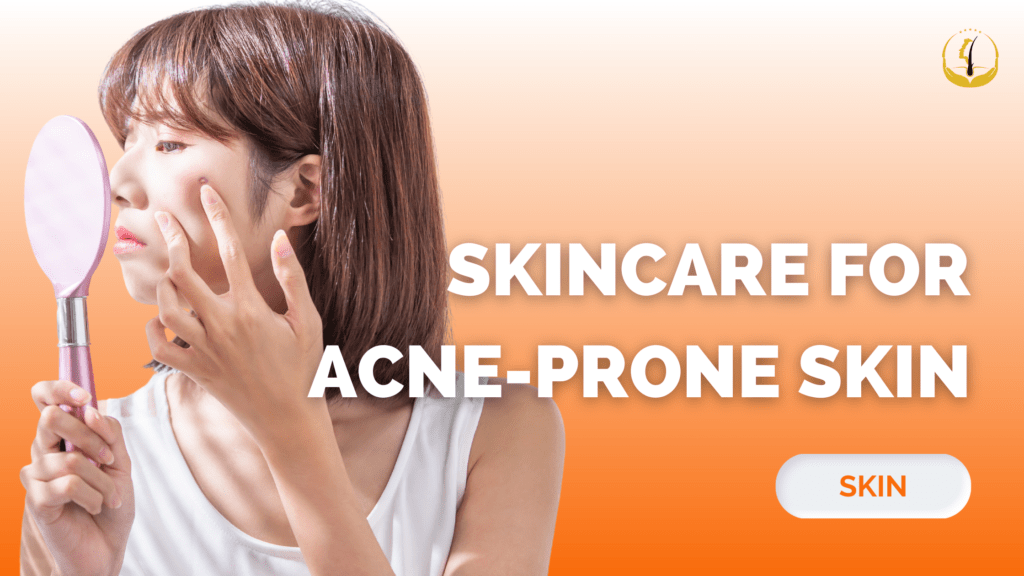
Acne-prone skin can be a persistent challenge, but with a carefully crafted skincare routine and a dash of patience, achieving clear and healthy skin is within reach. This guide aims to delve into effective ways to combat acne, provide anti-aging skincare tips, explore natural skincare remedies, and address concerns related to sensitive, oily, and dry skin. Additionally, we will uncover the often underestimated benefits of sunscreen for all skin types. Clearing Acne for a Healthier Skin Clearing acne stands as the primary concern for those grappling with acne-prone skin. Here are essential steps to guide you toward achieving blemish-free skin: Gentle Cleansing: Initiate your routine with a mild, sulfate-free cleanser. Avoid abrasive scrubs that can exacerbate acne, cleansing your face twice daily to eliminate excess oil and impurities. Salicylic Acid: Integrate a salicylic acid-based exfoliant into your routine. This helps unclog pores and reduce acne breakouts effectively. Hydration: Moisturize, even if you have oily skin. Opt for a non-comedogenic, oil-free moisturizer to keep your skin hydrated without clogging pores. Spot Treatment: Utilize a spot treatment with benzoyl peroxide or sulfur to address individual pimples directly. Consistency: Consistently adhere to your skincare routine. Results may take time, so patience is key—avoid switching products too frequently. Anti-Aging Skincare for Acne-Prone Skin Addressing anti-aging concerns is crucial while treating acne-prone skin. Here’s how to strike a balance: Retinoids: Consider incorporating a gentle retinoid product to combat fine lines, wrinkles, and acne scars. Begin with a lower concentration to avoid irritation. Antioxidants: Embrace skincare products rich in antioxidants like vitamin C and E. These protect your skin from free radicals and promote collagen production. Sun Protection: Sunscreen becomes your best ally for anti-aging. Opt for a broad-spectrum sunscreen with SPF 30 or higher—further insights on sunscreen benefits will follow. Hydration: Maintain plump and youthful-looking skin by including a hydrating serum or moisturizer in your routine. Natural Skincare Remedies Many natural remedies can complement your skincare routine without resorting to harsh chemicals. Consider the following: Tea Tree Oil: Leverage the antibacterial properties of tea tree oil to reduce acne. Dilute it with a carrier oil before applying it to the skin. Honey: Raw honey, with its antibacterial and anti-inflammatory properties, serves as an excellent spot treatment or a component of a homemade mask. Aloe Vera: Aloe vera soothes irritated skin and aids in healing. Apply pure aloe vera gel or opt for products containing aloe. Green Tea: Packed with antioxidants, green tea can reduce inflammation and redness. Brew a cup, let it cool, and use it as a toner. Sensitive Skin Care for Acne-Prone Skin Sensitive skin demands extra care to prevent irritation. Here’s how to manage it: Patch Test: Always patch-test new products on a small area before applying them to your face. Fragrance-Free Products: Steer clear of skincare products with added fragrances, as they can be harsh on sensitive skin. Gentle Cleansing: Use a mild, fragrance-free cleanser specifically designed for sensitive skin. Minimal Ingredients: Opt for skincare products with minimal ingredients to reduce the risk of irritation. Oily Skin Treatment and Dry Skin Concerns Managing oily and dry skin can be challenging when dealing with acne. Tailor your routine to your specific needs: Oily Skin: Use a gentle foaming cleanser to remove excess oil. Don’t skip moisturizing, as dehydrated skin can produce even more oil. Dry Skin: Opt for a creamy, hydrating cleanser. Incorporate a rich moisturizer and consider using a humidifier to add moisture to the air in your living space. The Benefits of Sunscreen for Acne-Prone Skin Managing oily and dry skin alongside acne can be challenging. Tailor your routine to your specific needs: Oily Skin: Employ a gentle foaming cleanser to remove excess oil. Don’t skip moisturizing, as dehydrated skin can produce even more oil. Dry Skin: Opt for a creamy, hydrating cleanser. Incorporate a rich moisturizer and consider using a humidifier to add moisture to your living space. The Benefits of Sunscreen for Acne-Prone Skin Now, let’s focus on the often underestimated benefits of sunscreen: Protection from UV Rays: Shield your skin from harmful UV rays, reducing the risk of skin cancer and premature aging. Prevents Hyperpigmentation: Sunscreen aids in preventing and fading hyperpigmentation, including acne scars and dark spots. Minimizes Redness and Inflammation: It can reduce redness and inflammation in acne-prone skin, making breakouts less noticeable. Preserves Collagen: Sunscreen preserves collagen, keeping your skin firm and youthful. Achieving clear and healthy skin for individuals with acne-prone skin requires a meticulously planned skincare routine encompassing effective acne treatments, anti-aging measures, natural remedies, and considerations for sensitive, oily, or dry skin. Embrace the crucial role of sunscreen in protecting your skin and maintaining its youthful appearance. By following these guidelines consistently, you can embark on the journey to radiant, blemish-free skin that you desire.
3 Body Treatments for Weight Loss

Achieving and maintaining a healthy weight is a goal that many individuals strive for, and there are various approaches to weight loss, ranging from traditional methods like diet and exercise to advanced medical treatments. In this blog, we will explore three body treatments for weight loss: Saxenda, liposuction, and fat transfer. We’ll discuss their effectiveness, benefits, and considerations for each treatment option. So, if you’re looking for weight loss tips and are interested in exploring different paths to a healthier you, keep reading. Saxenda: The Weight Loss Pen Saxenda, also known as liraglutide, is an FDA-approved prescription medication designed to help individuals with obesity or those struggling to shed excess pounds. It belongs to a class of drugs called GLP-1 receptor agonists and works by regulating appetite and increasing feelings of fullness. Effectiveness: Saxenda can be an effective tool for weight loss when combined with a healthy diet and regular exercise. Clinical studies have shown that individuals using Saxenda experienced significant weight loss compared to those on a placebo. Benefits: It may help individuals who have difficulty losing weight through diet and exercise alone. Saxenda promotes a gradual and sustainable weight loss, which is generally considered healthier than rapid weight loss. It can improve glycemic control and reduce the risk of type 2 diabetes in overweight individuals. Considerations: Saxenda is not a standalone solution; it should be used in conjunction with a comprehensive weight loss program. Like any medication, Saxenda may have side effects, including nausea and diarrhea. It requires a prescription and should be supervised by a healthcare professional. Liposuction: Surgical Fat Removal Liposuction is a surgical procedure that removes excess fat from specific areas of the body through suction. It is not a weight loss method in the traditional sense but is rather a body contouring procedure. Liposuction can be an option for individuals looking to target localized fat deposits that are resistant to diet and exercise. Effectiveness: Liposuction is highly effective at removing fat cells from targeted areas, resulting in a more sculpted appearance. However, it does not provide the same health benefits as weight loss achieved through diet and exercise. Benefits: It can provide immediate results in terms of body contouring. Liposuction can boost self-confidence by improving the appearance of certain areas. The recovery time is relatively short compared to other surgical procedures. Considerations: Liposuction is not a treatment for obesity or a substitute for healthy weight loss methods. It carries surgical risks, including infection, bleeding, and scarring. Maintaining a healthy lifestyle after liposuction is essential to prevent fat from returning to other areas. Fat Transfer: Weight Loss Alternative Fat transfer, also known as fat grafting or lipofilling, is a cosmetic procedure that involves transferring fat from one part of the body to another. While not primarily a weight loss method, fat transfer can serve as a way to enhance certain body areas while simultaneously reducing fat in donor regions. Effectiveness: Fat transfer is effective for body contouring and can provide subtle enhancements. However, the amount of fat that can be removed and transferred is limited, making it unsuitable for significant weight loss. Benefits: It offers a more natural alternative to synthetic fillers for body enhancement. Fat transfer can improve the appearance of areas such as the buttocks, breasts, or face. Since the fat used is from your own body, there is no risk of allergic reactions. Considerations: Fat transfer is not a weight loss method and should not be considered as such. The procedure involves anesthesia and carries risks associated with surgery. Results may vary, and multiple sessions may be required for optimal outcomes. When it comes to weight loss, there is no one-size-fits-all approach. The effectiveness of a treatment method depends on individual circumstances, preferences, and goals. While Saxenda can be a useful tool for those struggling with obesity, liposuction and fat transfer are more suitable for body contouring and enhancement. It’s essential to consult with GLOJAS experts to determine the most appropriate weight loss strategy for your unique situation. Remember that a holistic approach to weight management, including healthy weight loss tips, balanced diets, regular exercise, and sustainable lifestyle changes, is often the safest and most effective way to achieve and maintain a healthy weight. Click the link to learn more about Weight Loss: “Can Food Really Help In Weight Loss?” At Glojas, we welcome clients to reach out to us directly to schedule a free initial consultation. We offer guidance and valuable insights on how best to address your specific challenges. Let us assist you in navigating your journey with confidence and clarity.
Hair Loss: What is Cytokines?
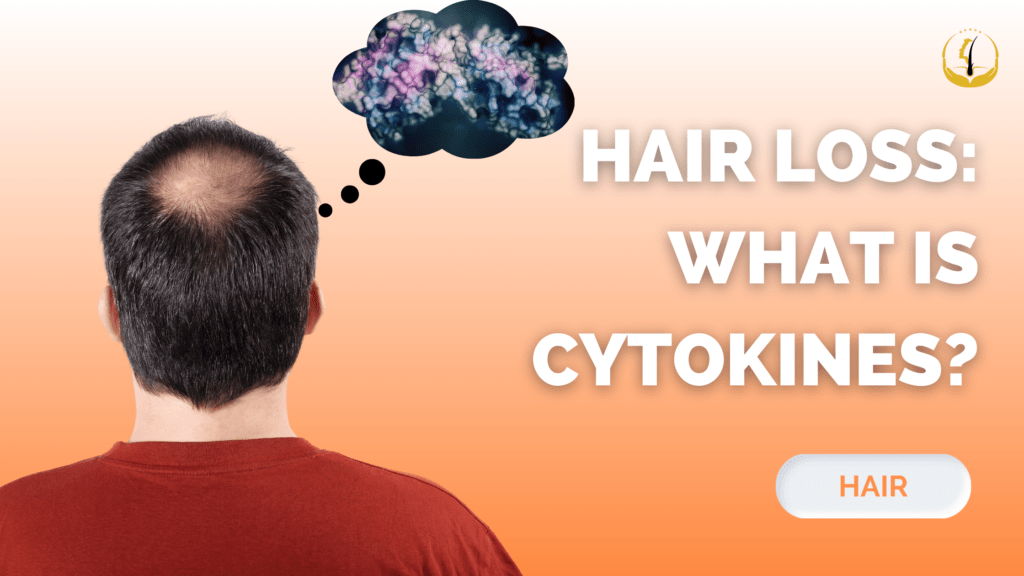
Hair loss is a common concern for many individuals, affecting both men and women of all ages. It can lead to a loss of self-confidence and impact one’s self-esteem. In recent years, there has been a growing interest in understanding the underlying causes of hair loss and exploring various treatment options, including hair transplant surgery and hair restoration techniques such as FUE and FUT hair transplants. One intriguing aspect of hair loss research revolves around the role of cytokines in this process. Let’s explore deeper into what cytokines are and how they relate to hair loss. What Are Cytokines in Hair Loss? Cytokines are small proteins produced by various cells in the body, including immune cells, to regulate inflammation, immune responses, and communication between cells. They play a crucial role in maintaining the body’s overall health and are involved in various physiological processes. However, when cytokines become imbalanced or overactive, they can contribute to a range of health issues, including hair loss. The Link Between Cytokines and Hair Loss Researchers have discovered that an imbalance of certain cytokines in the scalp can lead to hair loss. One of the key cytokines involved in this process is called Tumor Necrosis Factor-alpha (TNF-alpha). When TNF-alpha is present in excessive amounts in the scalp, it can trigger inflammation, disrupt hair follicle functioning, and ultimately lead to hair loss. Inflammation and Hair Loss Chronic inflammation is one of the primary mechanisms through which cytokines can contribute to hair loss. Inflammation can damage hair follicles, making it difficult for them to produce healthy, strong hair strands. This inflammation can also disrupt the natural hair growth cycle, leading to hair thinning and shedding. Hair Transplant Surgery and Cytokines Hair transplant surgery, including both FUE (Follicular Unit Excision) and FUT (Follicular Unit Transplantation) procedures, has become a popular solution for individuals seeking to restore their hair. These surgeries involve the transplantation of healthy hair follicles from one part of the body to the bald or thinning areas. Cytokines also play a role in the success of hair transplant surgery. Ensuring a balanced cytokine environment in the recipient area is crucial for the transplanted hair follicles to thrive and produce healthy hair. Surgeons may use various techniques and medications to minimize inflammation and create a favorable environment for hair follicle growth. Hair Restoration and Cytokine-Based Therapies In addition to surgical approaches, researchers are exploring cytokine-based therapies as a non-invasive method to address hair loss. These therapies aim to modulate cytokine levels in the scalp to reduce inflammation and promote hair growth. One such approach involves the use of topical solutions containing anti-inflammatory agents to target specific cytokines associated with hair loss. Maintaining a Healthy Scalp During Hair Loss To promote healthy hair growth and prevent hair loss, it’s essential to maintain a healthy scalp environment. This includes: Proper Hair Care: Use gentle shampoos and conditioners, and avoid excessive heat styling or chemical treatments that can damage hair follicles. Balanced Diet: Ensure your diet is rich in essential nutrients like vitamins, minerals, and proteins that support hair health. Stress Management: High-stress levels can contribute to hair loss, so practicing stress-reduction techniques like meditation or yoga can be beneficial. Cytokines are small proteins that play a significant role in regulating inflammation and immune responses in the body. Imbalances in cytokine levels in the scalp can contribute to hair loss by promoting inflammation and disrupting the hair growth cycle. Understanding the role of cytokines in hair loss is essential for developing effective treatments and therapies, including hair transplant surgery and hair restoration techniques. By addressing cytokine imbalances and maintaining a healthy scalp environment, individuals can take proactive steps to combat hair loss and promote the growth of strong, healthy hair. Click the link to learn more about Hair Loss: “Hair Loss In Male: Causes & Prevention” At Glojas, we welcome clients to reach out to us directly to schedule a free initial consultation. We offer guidance and valuable insights on how best to address your specific challenges. Let us assist you in navigating your journey with confidence and clarity.
Hair Loss In Male: Causes & Prevention
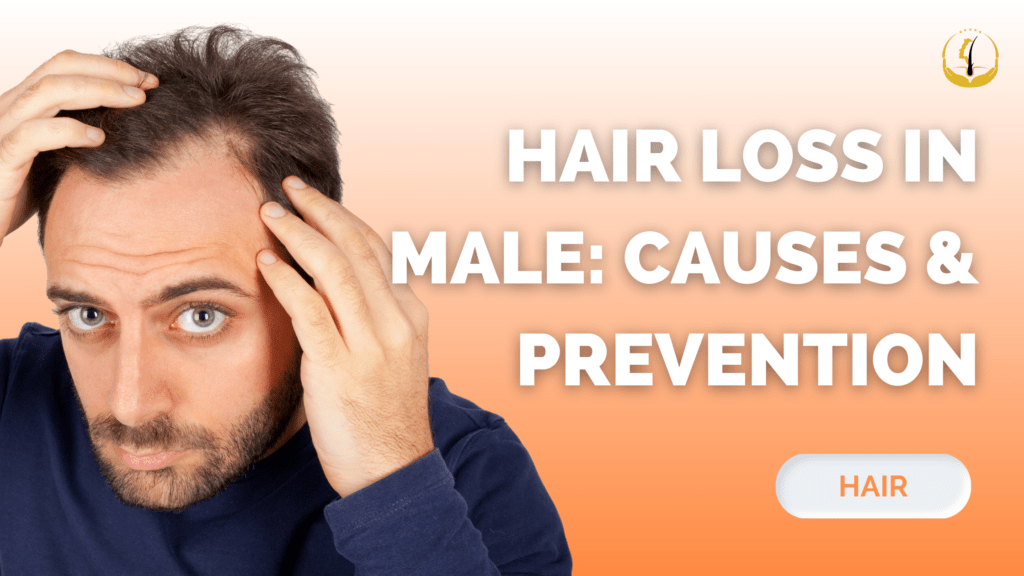
Hair loss, a common concern among men, can be a distressing experience that affects self-esteem and confidence. It’s essential to understand the various causes of hair loss and explore effective prevention strategies to maintain a healthy head of hair. Let’s explore the causes of hair loss in males and provide valuable tips for preventing and managing this condition. Common Causes of Hair Loss in Males Androgenetic Alopecia (Male Pattern Baldness) Androgenetic alopecia, often referred to as male pattern baldness, is the most common cause of hair loss in men. It’s characterized by a receding hairline and thinning hair on the crown, leading to eventual baldness. This condition is primarily genetic and influenced by hormones, particularly dihydrotestosterone (DHT), which shrinks hair follicles over time. Telogen Effluvium Telogen effluvium is a temporary form of hair loss triggered by significant stressors, such as illness, surgery, or emotional distress. It disrupts the normal hair growth cycle, causing a sudden increase in hair shedding. However, it’s usually reversible once the underlying stressor is resolved. Alopecia Areata Alopecia areata is an autoimmune disorder where the body’s immune system mistakenly attacks hair follicles, leading to patchy hair loss on the scalp. While the exact cause is unknown, genetics and environmental factors may play a role. Medications and Treatments Some medications, like chemotherapy drugs and certain blood pressure medications, can cause hair loss as a side effect. Radiation therapy can also lead to localized hair loss in treated areas. Nutritional Deficiencies Inadequate intake of essential nutrients, especially iron, biotin, and protein, can contribute to hair loss. Nutritional deficiencies weaken hair follicles and disrupt the hair growth cycle. Prevention and Management of Hair Loss Now that we’ve covered the common causes of hair loss in males, let’s explore effective prevention and management strategies: Maintain a Healthy Lifestyle A balanced diet rich in vitamins, minerals, and proteins is crucial for healthy hair growth. Incorporate foods like eggs, nuts, spinach, and lean meats into your diet. Regular exercise and stress management techniques can also help maintain overall well-being, reducing the risk of telogen effluvium. Avoid Harsh Hairstyles and Hair Products Tight hairstyles like cornrows and excessive use of styling products or heat treatments can damage hair and lead to hair loss. Opt for gentler styles and minimize the use of harsh chemicals and heat. Medications and Supplements For androgenetic alopecia, there are FDA-approved medications like minoxidil and finasteride that can slow hair loss and promote regrowth. Consult a healthcare professional before starting any medication. Platelet-Rich Plasma (PRP) Therapy PRP therapy involves injecting a patient’s own platelet-rich plasma into the scalp, which can stimulate hair follicles and promote hair growth. It’s a minimally invasive option for some types of hair loss. Hair Transplant Surgery In cases of advanced male pattern baldness, hair transplant surgery can be a viable option. It involves transplanting hair follicles from donor areas (usually the back of the head) to balding areas. This procedure can provide long-lasting results, but it’s essential to consult with a qualified surgeon. Use Gentle Hair Care Products Choose mild, sulfate-free shampoos and conditioners that promote scalp health. Regularly washing and keeping the scalp clean can prevent clogged follicles and infection. Stay Informed and Seek Professional Help If you notice excessive or sudden hair loss, it’s crucial to consult a dermatologist or hair specialist for a proper diagnosis and personalized treatment plan. Hair loss in males can be caused by a variety of factors, but understanding the root cause is the first step in addressing the issue effectively. By adopting a healthy lifestyle, avoiding damaging hair practices, and exploring suitable treatments, you can minimize the impact of hair loss and maintain a confident and healthy appearance. Remember that seeking professional guidance is essential to determine the most suitable prevention and treatment options for your specific condition. Click the link to learn more about Hair Loss: “Understanding Male Pattern Hair Loss through the Norwood Scale’s Class 1–7” At Glojas, we welcome clients to reach out to us directly to schedule a free initial consultation. We offer guidance and valuable insights on how best to address your specific challenges. Let us assist you in navigating your journey with confidence and clarity.
How to Increase Beauty With Dermal Lip Fillers

Do you dream of having the most enchanting lips in your social circle? Is attracting your partner with irresistibly attractive lips a desire of yours? Look no further – dermal lip fillers can be the solution to your quest, offering you fuller, plumper, smoother, and well-defined lips. The Quest for Perfect Lips The pursuit of attractive and smooth lips has led women to explore various options. From lipstick and lip liner to lip gloss, these cosmetic products have been commonly employed to enhance lip shape and volume. However, a revolution in cosmetic surgery has brought forth a sought-after solution – lip augmentation treatments, with dermal fillers at GLOJAS standing out as one of the safest, most reliable, and effective options. The Rise of Lip Fillers Lip fillers have emerged as a popular method for enhancing lips, allowing individuals to achieve either a full or more natural look effortlessly. These fillers extend beyond mere aesthetic appeal; they are also employed to address signs of aging by smoothing wrinkles and eliminating smoker’s lines around the mouth. Lip augmentation treatments with dermal fillers can restore shape and definition to lips that may have diminished with age. The Benefits of Lip Augmentation A lip augmentation is a cosmetic procedure that adds more volume and substance to the face, resulting in plumper, fuller, and more defined lips. The dermal filler method not only enhances lips but also contributes to an overall improved appearance by harmonizing and rejuvenating the face, imparting a soft and full-lipped aesthetic. Dermal fillers can rectify thin, aging, or uneven lips by providing volume, definition, lifting the sides of the mouth, and reducing fine lines. Areas Enhanced by Dermal Fillers Dermal fillers have the power to enhance various aspects of the lips, including: Cupid’s Bow: Defining the cupid’s bow provides the necessary balance to women’s lips. Vermilion Borders: Enhancing the layout enhances definition and limits lip bleed. Upper and Lower Lip: Fillers offer more volume and substance to the face. Philtrum Ridges: Dermal fillers enhance and define the lip’s features. Dispelling Myths The notion of getting dermal fillers in the lips may evoke anxiety in some, with concerns about overly large lips. However, renowned cosmetic clinics prioritize thorough consultations to understand patients’ desires and limitations. Trained specialists ensure that patients achieve a natural and balanced look, dispelling any fears of unnatural outcomes. Why Dermal Fillers? Dermal fillers have become the preferred choice for women aspiring to achieve attractive lips due to their: Natural-Looking Results: One treatment is sufficient for achieving naturally appealing outcomes. Correction of Uneven Lips: Lip injections can address asymmetry or irregularities. Definition and Fullness: Specially formulated fillers provide definition and fullness. Controlled Injections: The injections are entirely controlled, allowing individuals to choose between a subtle, dramatic, or toned look. In conclusion, dermal lip fillers offer a transformative solution for those seeking to enhance their lips. With natural-looking results, controlled injections, and the ability to address various lip concerns, dermal fillers have become the go-to option for individuals aspiring to achieve the perfect pout. Consult with experts at GLOJAS to embark on your journey towards irresistible and naturally beautiful lips.
Reducing Breast Size: Best Effective Methods That Helps

Breasts are one of the best features of a woman’s body and increase attraction significantly. However, many women are worried because of their oversized breasts. However, with the help of breast surgery, you can reduce the size of your huge bosom There’s no doubt that breasts are one of the most crucial features for any woman. Big bosoms look extraordinarily beautiful. However, if the bosoms are way too large in size, then at that point females start considering various options available to reduce the size of their bosom. There are numerous reasons why women choose to reduce the size of their breasts. One cannot deny the fact that females with small bosoms often envy women with big breasts. However, if you have a huge bust that is not in proportion with your body, then there are numerous methods to do that. All you have to do is to find the ideal way to reduce the size of your bust, whether it is natural or surgical. Breast reduction surgery is the best available option to get rid of various discomforts that you have to deal with due to your oversized bosom. A few specialists suggest this approach since you can get a huge amount of tissue expelled from your body in a simple way. A large number of the females don’t go for a surgical procedure because they fear the scars that are left behind after the surgery. However, the level of scars can also be significantly reduced by visiting the most experienced surgeon in your city. With a high standard of skills and experience, an expert surgeon like at GLOJAS will make sure that there are least scars visible on your skin. There is one more procedure to dispose of huge bosoms, which is called as vertical incision. Yet at the same time, even this strategy has the possibility of scar appearance, but that can be taken care of by a highly skilled surgeon. If you aren’t afraid of going under the knife for cosmetic procedures, then this is the most significant, reliable, safe, and effective way to reduce breast size. This is seen as the best answer to the question of how to reduce breast size. There are a few natural ways also available to reduce the size of your bust. One is exercise, which is the most effective way to decrease the excess fat and tissue from your body naturally. Exercise can reduce the weight of your entire body and help you to stay healthy. However, there are a few exercises available that are meant specifically to reduce the size of breasts only. Eating a healthy diet is also another way to reduce the size of your oversized bosoms. A healthy diet will help to cut down the excess fat and tissue from the body. However, if you choose to get surgery, then consult the best cosmetic surgeon at GLOJAS on what diet you should take before and after the surgery.·Consult for FREE at GLOJAS Specialist Clinic.
How to Slow Down Hair Loss With Effective Remedies
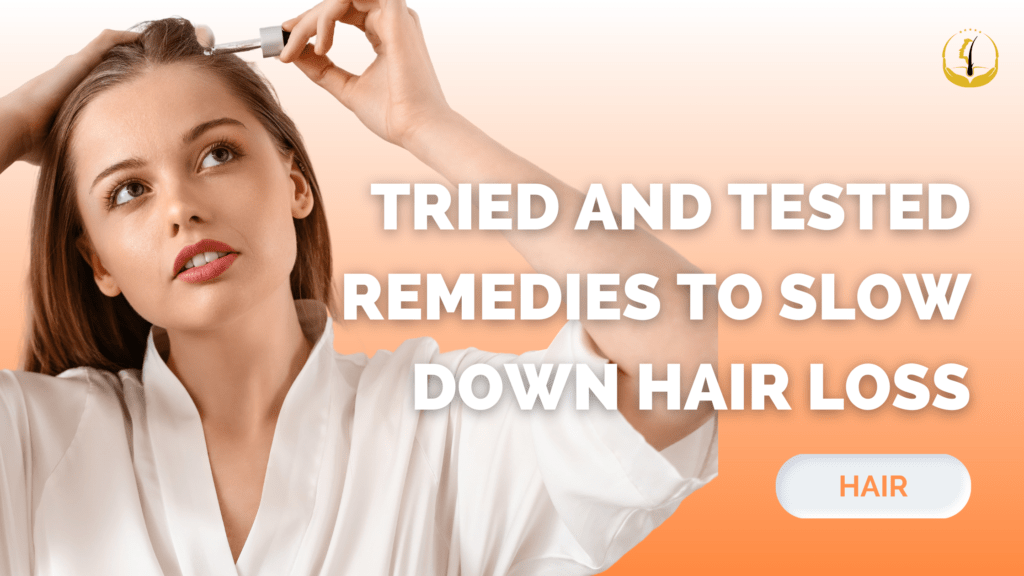
Hair loss is a widespread concern that not only affects appearance but also takes a toll on confidence. While numerous tips claim to prevent hair loss, only a handful prove effective. Let’s explore unconventional yet tried-and-tested remedies that may genuinely help to slow down hair loss. Saw Palmetto to Slow Down Hair Loss Saw Palmetto is a natural herb renowned for its effectiveness in slow down hair loss caused by natural reasons. It provides an anti-androgenic impact, making it potent for treating androgen-induced baldness. Additionally, Saw Palmetto contributes to improved prostate health, closely linked to male pattern baldness. By lowering levels of DHT, it removes blockages of hair growth caused by androgen. Available at local stores, Saw Palmetto is often consumed in capsule form. However, consulting with a doctor before usage is advisable. Ensure That The Existing Hair Remains Approach: Though it may seem futile, it is crucial to treat the remaining hair with excellent care. Avoid: Tight-fitting caps, tight braids, or extreme hairstyles that could impede blood circulation. Practice: Remove split ends, condition your hair, and keep it detangled. This not only gives the appearance of denser hair but also shields it from falling out. Massage to Slow Down Hair Loss Benefit: Massages aid in improving blood circulation throughout the body. Technique: Gentle rubbing, squeezing, pressing, and kneading without harsh force enhances blood flow. Results: Properly done scalp massages prevent capillary blockage, a common cause of hair loss. Options: Professional massage parlors or daily self-massages with natural hair oil are effective choices. Essential oils to Slow Down Hair Loss Enhancement: Upgrade the massage experience by incorporating essential oils. Recommendations: Besides conventional oils, consider Rosemary and horsetail oil for improved blood flow to hair follicles. Nettle root oil, rich in lipids and Vitamin A, is known for promoting hair development. Detox Yourself to Slow Down Hair Loss Initiative: Kickstart your journey to prevent hair loss by detoxifying your body. Approach: Include detoxifying food items and various juices known for their cleansing properties. Benefits: A healthy scalp, essential for hair growth, can be achieved through body detoxification. Incorporating these tried-and-tested remedies into your routine may offer a holistic approach to preventing hair loss. Remember, consistency is key, and consulting with healthcare professionals ensures personalized guidance for your unique situation. Taking proactive steps towards maintaining a healthy scalp and hair will contribute to both appearance and confidence.
8 Signs of Infection After Breast Surgery
Breast surgery, whether it’s for cosmetic enhancement or medical reasons, is a significant procedure that requires proper care and attention during the recovery process. While complications are relatively rare, one potential concern is the risk of infection. Infections after breast surgery can delay healing and result in serious complications if left untreated. In this blog post, we will be discussing the eight key signs of infection after breast surgery and what you should do if you notice any of these symptoms. Persistent Pain and Swelling Some degree of pain and swelling is normal after breast surgery, but if you notice that these symptoms persist or worsen after the initial recovery period, it could be a sign of infection. Infections can cause localized inflammation, making the surgical site more tender and swollen than expected. Redness and Warmth If you observe increased redness and warmth around the surgical area, it may indicate an infection. This is due to the body’s immune response to the infection, leading to increased blood flow to the affected area. Keep an eye out for any changes in skin color or temperature. Fever A fever is a common sign of infection in the body. If your body temperature exceeds 100.4°F (38°C), it’s essential to contact your surgeon immediately. Fever is a clear indicator that your body is fighting off an infection, and prompt medical attention is necessary. Pus or Unusual Discharge Any discharge from the surgical incision site should be clear or slightly bloody during the early stages of recovery. However, if you notice pus, a foul odor, or a sudden increase in discharge, it may signal an infection. Do not hesitate to contact your surgeon if you observe these changes. Increased Pain While some discomfort is expected after breast surgery, a sudden and significant increase in pain can be a warning sign of infection. If you find that your pain becomes more severe rather than improving as expected, consult your healthcare provider promptly. Worsening Fatigue Feeling tired during the initial recovery phase is normal, but if your fatigue worsens instead of improving, it might be due to an infection. Infections can tax your body’s energy resources as it fights off the invading pathogens. Changes in Surgical Site Appearance Pay close attention to the appearance of your surgical site. If you notice any new or unusual developments such as open wounds, blisters, or the separation of sutures, it could be indicative of an infection. Proper wound care is essential to prevent complications. Unusual Odor An unpleasant or foul odor coming from the surgical area may be a sign of infection. Infections can produce distinct smells due to the presence of bacteria or other pathogens. If you detect an unusual odor, seek medical attention promptly. What to Do If You Suspect an Infection If you experience one or more of these signs of infection after breast surgery, it’s crucial not to ignore them. Timely intervention is essential to prevent the infection from spreading and causing more severe complications. Here’s what you should do: Contact Your Surgeon: Reach out to your surgeon or healthcare provider as soon as you notice any concerning symptoms. They can assess your condition and recommend the appropriate course of action. Follow Medical Advice: Listen to your healthcare provider’s instructions carefully. They may prescribe antibiotics or other treatments to manage the infection. Maintain Good Hygiene: Keep the surgical site clean and follow proper wound care instructions to prevent further complications. Rest and Stay Hydrated: Resting and staying hydrated will help your body recover more efficiently and fight off the infection. Infections after breast surgery are rare, but it’s crucial to be vigilant and aware of the signs. By recognizing the early warning signs of infection and seeking prompt medical attention, you can help ensure a smoother and safer recovery process. Remember that GLOJAS experts and the healthcare team are here to support you throughout your recovery journey, so don’t hesitate to reach out if you have any concerns. Your health and well-being are our top priorities during this time! Click the link to learn more about Breast: “Get Your Freedom Back with Breast Reduction” At Glojas, we welcome clients to reach out to us directly to schedule a free initial consultation. We offer guidance and valuable insights on how best to address your specific challenges. Let us assist you in navigating your journey with confidence and clarity.
Can Burshing Promote Hair Growth?
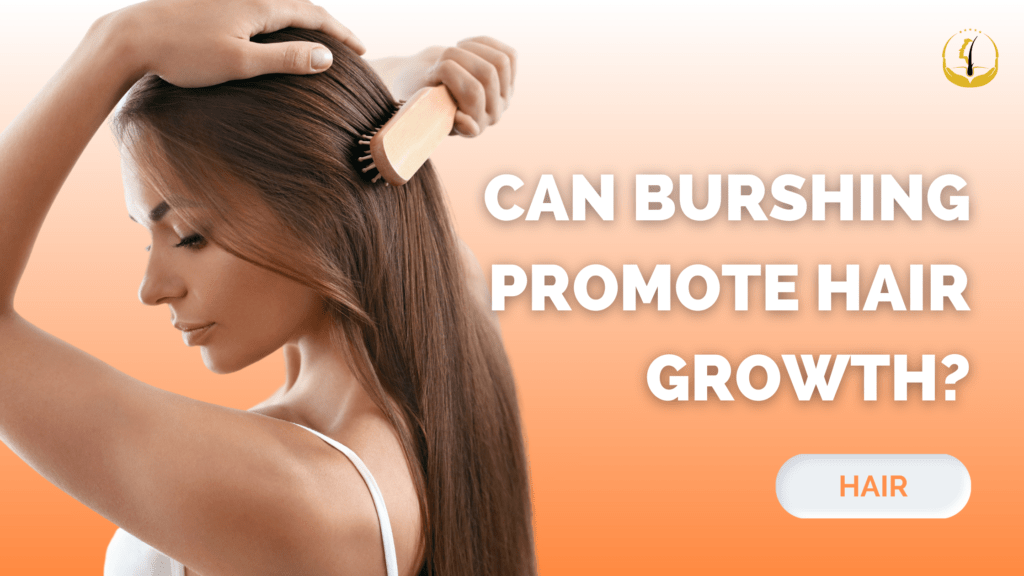
Many people dream of having thick, luxurious hair, and they are willing to try various methods to achieve it. One popular belief is that brushing your hair can promote hair growth. But is there any truth to this claim? Let’s explore the relationship between brushing and hair growth, considering the scientific evidence and expert opinions. The Brushing Myth The idea that brushing your hair can stimulate hair growth is a common myth. It’s often suggested that brushing improves blood circulation to the scalp, which in turn nourishes hair follicles and encourages hair growth. While this theory sounds plausible, it’s essential to examine the scientific basis behind it. The Truth About Brushing Brushing your hair does have some benefits, but it’s important to understand its limitations. Regular brushing helps distribute natural oils produced by the scalp, called sebum, along the hair shaft. This can make your hair appear shinier and healthier. Brushing also helps remove tangles and prevents hair breakage, which can make your hair look thicker. However, the idea that brushing alone can significantly promote hair growth is not supported by scientific evidence. Hair growth primarily depends on factors like genetics, hormones, diet, and overall health. While brushing can contribute to hair health, it’s not a magical solution for achieving Rapunzel-like hair. Brushing Techniques Matter If you choose to brush your hair regularly, it’s essential to use the right techniques and tools to minimize damage and maximize the benefits. Here are some tips: Use a gentle brush: Opt for a soft-bristle brush or a wide-toothed comb to avoid pulling and breaking your hair. Brush with care: Start brushing from the tips and work your way up to the roots. Be gentle and avoid aggressive brushing, especially when your hair is wet, as it’s more prone to damage when wet. Don’t overdo it: Excessive brushing can lead to hair breakage. Aim for a balance between keeping your hair tangle-free and avoiding over-brushing. Clean your brush: Regularly clean your brush to remove dirt, oils, and hair products, which can transfer to your hair and scalp. The Role of Scalp Massage While brushing alone may not promote hair growth, scalp massage is a technique that some people believe can have a positive impact. Scalp massage can improve blood circulation to the scalp, which may help deliver more nutrients to the hair follicles. However, it’s important to note that the effects of scalp massage on hair growth are still under research, and results may vary from person to person. In conclusion, while brushing your hair is an essential part of hair care, it’s not a guaranteed method for promoting hair growth. Hair growth is a complex process influenced by various factors, including genetics, hormones, and overall health. While brushing can contribute to hair health by distributing natural oils and preventing breakage, it’s not a magical solution for achieving rapid hair growth. If you’re concerned about hair loss or want to stimulate hair growth, it’s advisable to consult with GLOJAS experts. We can provide personalized advice and recommend treatments that are backed by scientific research. Remember that maintaining a healthy diet, managing stress, and avoiding harsh hair treatments are also crucial factors in maintaining and promoting hair growth. So, while brushing can be a part of your hair care routine, it’s not the only answer to achieving the luscious hair you desire. At Glojas, we welcome clients to reach out to us directly to schedule a free initial consultation. We offer guidance and valuable insights on how best to address your specific challenges. Let us assist you in navigating your journey with confidence and clarity.
